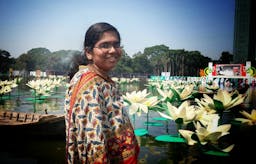Challenges For Poor Women in the Health Services in Bangladesh
Jun 7, 2019
Story
The state of public health in Bangladesh has made considerable progress through The First Five Year Plan (1973-78). It highlighted the importance of building a network of health facilities - a hospital in every district, in some cases supplemented by a Maternal and Child Welfare Centre (MCWC), and an Upazila Health Complex (UHC) in every Upazila throughout the country. A number of vertical programs like malaria and small pox eradication programs were initiated in 1976. Later on, the Government of Bangladesh (GOB) revived the family planning program in an organized manner. A separate Directorate of Family Planning was established within the Ministry of Health and Family Welfare. In 1975, an international consortium of bilateral development agencies, in coordination with the World Bank, started to provide financial and technical assistance to the GOB for the implementation of successive population and family planning projects, each five to six years in duration. Especially, the Fourth Population and Health Project (1992-98) provided further support for Maternal and Child Health and disease control activities along with family planning services.
However, at that point Bangladesh neither had a comprehensive national health policy nor a separate health sector plan outlining medium and long term goals. To achieve the SDG Goal 3 of Good Health and Well-being, the government and the civil services should look seriously into the matter by understanding that the health system of Bangladesh relies heavily on them due to public finance, setting overall policies and service delivery mechanisms. Poor people are deprived of basic health services in Bangladesh and the biggest victims turn out to be women and children.
If doctors are not referred to as Sir/Madam, they are being harassed to the extent of fatal consequences by not giving them services. Point is not about the lack of respect from the poor community. It is more about the issue that poor people are already deprived of basic human right. Health service is a basic right, not a luxurious service provided on the basis of cash. Moreover, without cash, health services do not treat the patients with care. For example, people who don’t pay are made to go last in the serial for consulting with doctors. Even doctors don’t have that level of humanity when treating the poor patients.
One of the crucial challenges that the health system in the poor segment faces is the lack of female doctors. And their presence in the health system is highly crucial since women are the main target of diseases and need much more constant attention than men. The density of formally qualified registered Health Care Providers (HCP), i.e. doctors, nurses, and dentists, according to WHO, in Bangladesh is 7.7 per 10,000 populations, and constitute only about 5% of the total health workforce. When the number of doctors is already short in Bangladesh, how can we expect an increase in the number of female doctors? Even if female doctors are appointed, they want to travel to town from village by giving the excuse “My husband is there. So, I need transfer”. Moreover, there are no doctors available at night to provide the patients services at night even though there is a section for ‘Emergency’.
Bangladesh’s maternal mortality ratio is one of the highest in the region. The UN estimates the rate as high as 570 deaths per 100,000 live births. The prevalence of unattended home births, the high rate of births to adolescent girls, and malnourishment are the main contributors to the high maternal mortality rate. A woman’s lifetime risk of dying in pregnancy or childbirth is one in 51, compared to one in 47,600 in Ireland (the best performer). About 12,000 women die every year from pregnancy or childbirth complications. Yet, not enough doctors are available for providing necessary services to them. Moreover, the available doctors and nurses use abusive language when dealing with female patients.
Therefore, understanding the context and considering the opportunities available, the doctors who are appointed in the Upazilla Health Complex come to the consulting service once or twice should come every day to ensure the provision of health care services on time. There is a huge space in the hospitals of Bangladesh and we can use at least a corner of them to provide a safe and female-friendly environment. Moreover, there should be a monitoring and evaluation by the development personnel to understand the context and take an initiative to train the doctors and nurses on organizing a friendly training session for doctors and administrations of health services.
Health is a fundamental human right, and regardless of their socio-economic status everybody has the right to enjoy optimal health status. And this can happen only when we can together bring the solutions by focusing on the SDG Goal 3: Good Health and Well-being.
This article has been written collaboratively by Md Shahadat Hossine, a graduate in International Relations and Jafreen Alamgir,who is currently doing undergraduate in PPE( Politics,Philosophy and Economics)
Works Cited:
Biswas, Tuhin, Anwar Islam. (20 November 2014) Health system in Bangladesh: Challenges and opportunities American Journal of Health Research
Mahmud, Shadab( 24 March 2013) Health workforce in Bangladesh bdnews24.com
Mitro,Proshanto (16 November 2016). আজিমপুর মাতৃসদনে পদে পদে গুনতে হয় টাকা banglanews24.com
Staff Report (17 October 2017). প্রসূতিকে বের করে দিলেন চিকিৎসক, বাইরে প্রসবের পর নবজাতকের মৃত্যু newsbangladesh.com
Staff Report(27 October 2017)ডাক্তার কে আপা বলায় স্বজনদের মারধর, রোগীর মৃত্যু 24todaynews.com
Women and girls in Bangladesh. (June 2010), unicef Bangladesh




